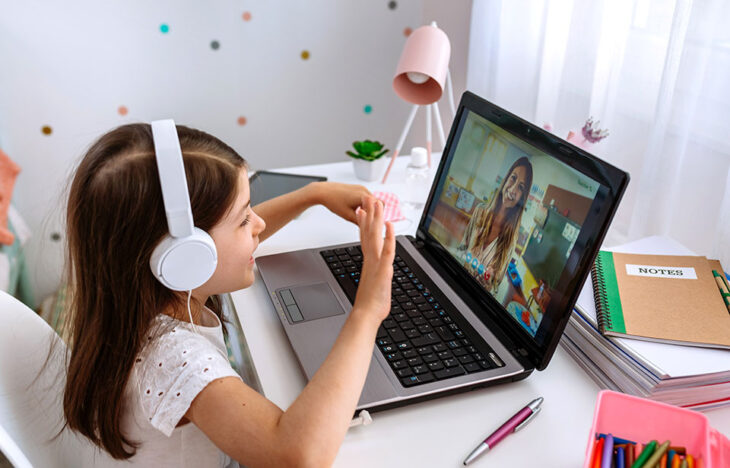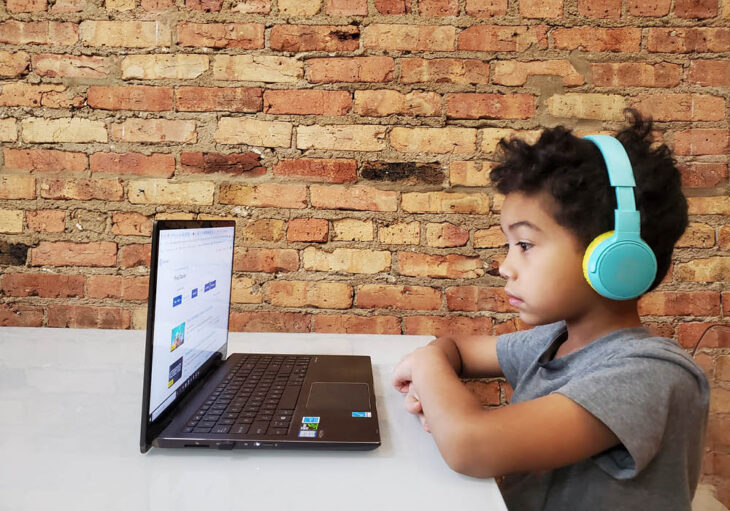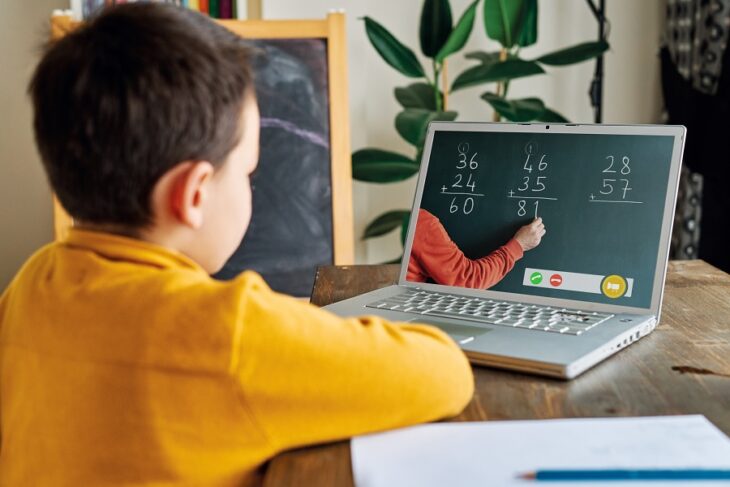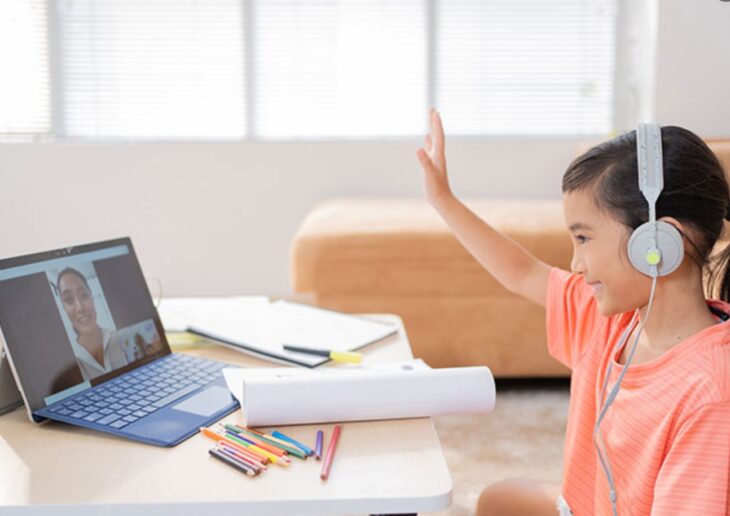In an age where online learning has become the norm rather than the exception, it is more important than ever for parents to ensure that their kids get an optimal online learning experience. How can one ensure this? Read on to know more.
Contents
- 1. Opt for a one-on-one class over a group class
- 2. Ensure total online privacy and safety of your kid
- 4. Create for your child an environment with minimum distractions and a clean, fuss free desk
- 5. Look out for an instructor who knows how to control an online class
- 5. Opt for a tech-savvy online class that believes in streamlining its teaching process including publication of online handouts, assignments
- 6. Seek out a class where the staff is responsible
- 7. Look out for a well structured curriculum
- 8. Opt for a class with an efficient, one-stop-shop student portal
- 9. Look out for the teaching methodology adopted by the online class
- 10. Select a class that fosters a strong sense of community
1. Opt for a one-on-one class over a group class
Group classes – especially the smaller ones – may help kids collaborate with each other but nothing beats the individual attention your kid can get in a class offering 1:1 student teacher ratio. Such a ratio means your child is getting individual, personalised attention that is bound to help him/ her grow faster than they would in a group setting.

Source: MyKidsTime
2. Ensure total online privacy and safety of your kid
Typically, the onus of this lies with the online class but parents too should make sure that this is taken care of, especially in light of recent instances of Zoombombing (Zoombombing refers to unwanted intrusions into video conference calls which in turn cause disruption).
For instance, the instructor can make sure that students/attendees are not allowed to use fake names while logging in, particularly in online classrooms where students do not switch on their video. This, along with keeping track of the attendees expected to join the class, will help keep random walk-ins at bay.
Similarly, it is a good idea to opt for a class that uses video conferencing platforms with an online waiting room. This will help vet the students’ attendance before they join the actual online class.
Using passwords to start/ join online classes is also an important factor. For example, at YoungWonks instructors with admin access use strong, unique passwords since these meetings are attended by kids and student privacy is a sensitive matter that demands serious attention.

Source: Children’s Health
4. Create for your child an environment with minimum distractions and a clean, fuss free desk
Like in a physical classroom, it would be good to have minimum distractions in an online class. So make sure your kid has a dedicated desk and chair with not much clutter, thus allowing him/ her to focus on the subject at hand. In this virtual classroom, the instructor can do his/her part by picking a plain/white background to sit or stand against and teach.
Similarly, the instructor can enable drawing on screen on a case-by-case basis. This will help enforce discipline in the online class. Letting all students draw is likely to cause unnecessary nuisance and waste of valuable class time.
Hosting rights too should be protected so that they are not misused or passed on easily. Right from disabling the ‘join before host’ feature to changing the default feature of passing on hosting rights to a student in the event of the host (aka the teacher) having a weak connection, it is extremely important to ensure these rights are not abused.

Source: CEOWORLD magazine
5. Look out for an instructor who knows how to control an online class
A good online class is one where the instructor is in full control of the class environment, including the chat settings. The ideal chat settings are such that the chats in the online classroom are sent to everyone and individual/ private chats between students is disabled. Muting all students by default is also a standard move.
Raise hand features (that keep track of the order in which hands were raised and allow students to speak accordingly) should be used readily as they help streamline conversations in a group setting.
Virtual breakout rooms too should be used whenever needed: indeed, splitting up a big group of (ideally older) kids into smaller groups is a good idea, especially when it comes to working on small group projects/assignments.

Source: CNET
5. Opt for a tech-savvy online class that believes in streamlining its teaching process including publication of online handouts, assignments
Since students no longer turn in their projects on paper, there is an absolute need for online classes to create a smooth workflow for students, especially in terms of submissions of online handouts and assignments. So parents should select online classes for their children after assessing the features of the school management softwares being used. Classes relying on Google Classroom, EdOptim are ideal as they come packed with features designed to optimise the whole experience.

Source: United Way of Metropolitan Dallas
6. Seek out a class where the staff is responsible
This may seem trivial but it is far from it. An ideal class experience is one helmed by not just well qualified staff but also staff that behaves in a responsible fashion. For instance, such an instructor would email a meeting link well before the class is set to begin, thus avoiding any delay and unnecessary waiting. This holds true particularly for meetings with unique links, so teachers ought to send the links well in advance instead of at the last minute.

Source: Geeksscan
7. Look out for a well structured curriculum
There’s no substitute for a well-defined curriculum and this is a major factor when it comes to ensuring a smooth learning experience – be it online or offline. Your kid’s class should have a set curriculum along with worksheets for students at the end of each section. This adds an element of uniformity to the lessons and parents and students have a clear idea about what will be taught in the class. A well defined structure also means that the format of the lessons doesn’t change as per anyone’s whim and fancy.

Source: Chicago Parent
8. Opt for a class with an efficient, one-stop-shop student portal
A meeting that can be accessed using the link from a student portal is usually safer than ones where one waits for the link to be shared from a different channel. In fact, using the link from a password-protected portal also does away with the teacher’s need to produce a new link for each session. This in turn helps avoid outsiders and a situation where parents and students have to wait for the meeting link.

Source: SuccessYeti
9. Look out for the teaching methodology adopted by the online class
Parents should make the effort to know more about the online class’s teaching methodology. To begin with, they should promote a growth mindset. People with this mindset encourage consistent hard work and positive thinking. It is very important for the teacher to recognise that every child is different and can take a different time period to learn. This healthy attitude towards self-paced teaching comes from a staunch belief in the growth mindset.
Similarly, a good online coding program for kids would swear by free form learning where students are taught to work on a real-life project right from ideation to completion. Regular evaluations would also mean closely tracking the kid’s progress.

Source: Sacramento4Kids Blog
10. Select a class that fosters a strong sense of community
The support of a strong community can make a lasting impact on a student especially when the student is faced with a subject that is intimidating at first. It’s extremely crucial that students learn to collaborate and help each other learn, more so in case of larger projects that demand team effort.
